Open Your Classroom Door to Family Audiences
A MiddleWeb Blog
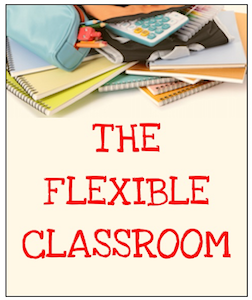 I’m not going to lie. Having families come into your middle school class is dangerous. And having families come into your classroom for presentations is downright lunatic, right? You and your students are vulnerable to their opinions.
I’m not going to lie. Having families come into your middle school class is dangerous. And having families come into your classroom for presentations is downright lunatic, right? You and your students are vulnerable to their opinions.
Class will go on as it normally does – with nosebleeds, fire drills, nervous chatter, and maybe a swear word mumbled in earshot of the guests by a disgruntled teenager.
Once, we had an evacuation because of a gas leak, and all those people who had taken off from work to come see their child were stuck freezing in the parking lot. Inevitably, we had a blizzard on one of the presentation days.
Forget that saying about first impressions
Visitors don’t know what to make of our class community at first. In my classroom students are allowed to eat, drink, and use their devices to work. I don’t publicly comment on late students, so some observers might think I’m not handling it. I am.
During presentation transition times, students talk. Often loudly. When the next student is ready, I clap. They all clap back. The next presentation begins.
Sometimes the technology fails, or sometimes the student who is practicing the “academic risk taking” I preach about has gotten in over their head and bombs. That’s ok. I’ll let them try again tomorrow.
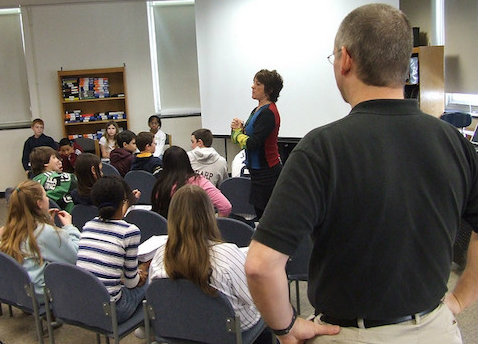
Mine is not your typical ELA classroom, which is exactly why it is so important for families to visit. Then again, none of us have “typical classrooms” because we bring ourselves to the job, not a stereotype of a teacher that they might be imagining.
Bridging this gap between the perception of our classrooms and the reality is important because it not only supports our students, it also supports our profession.
Why families crowd my classroom
For me, actively inviting families into class is worth the many risks because they will see amazing displays of student work (see the winners of the Utopia contest here), a community that supports one another, and a formal recognition that the work happening in Room 255 is worthy of an audience.
Recently, over the course of four days of student presentations, 56 visitors came to my room to watch a child they care about. Moms, dads, stepparents, former teachers, grandparents, foster parents, and even a few friends from other classes came by. There were toddlers and babies in strollers. There were administrators.
I encourage students to invite any cheerleader they have. I have had a lunch lady, a coach, and the drama teacher make time to sneak up to my room, as well as any number of students who are in study hall.
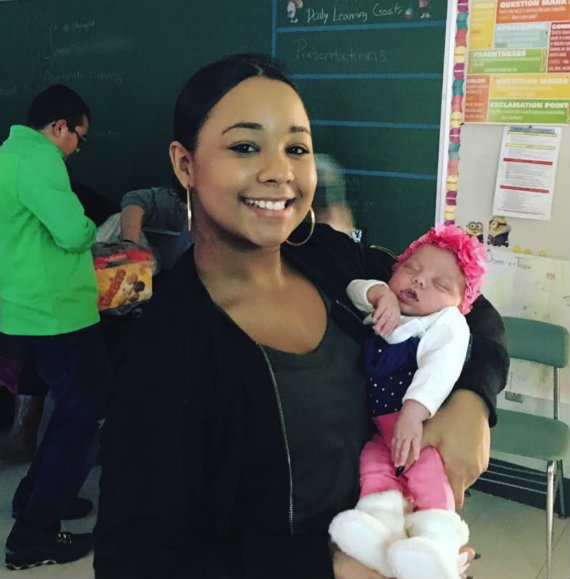
Ah’Kiera’s family came to see her present and brought her baby sister Bella with them.
If we are to convince our students that the work we are doing is important, we need to share it with their families. If you are willing to give it a try, I think you’ll be hooked too.
Here are three mindsets that will help you plan for open-to-the-public presentations.
1. It won’t be perfect. Ever.
No matter how many checklists you make, color-coded or not, it won’t be perfect. Ever. It is hard, as teachers, to let go of the illusion that we can control everything in our classroom. In order to invite families into the room, we have to concede to both students and their families that as a community of learners we are imperfect works-in-progress.
Recently, my students began using Google Slides as their presentation platform. It hadn’t occurred to me that we’d need to sign in and out of Google, and the transition times were rough. I was sweating. Would everyone get to present who was supposed to? What would I do if they didn’t?
Modeling the behavior I want my students to emulate, I said to the antsy crowd, “Thanks for your patience. We’re learning as we go, so this is going to be exciting!” The truth of the matter is, if we aren’t learning as we go we are missing the opportunity to innovate.
Share with the audience what it is that students are focusing on. I post my Daily Learning Goals and reminders about audience expectations. I use Teach Like A Champion’s SLANT.
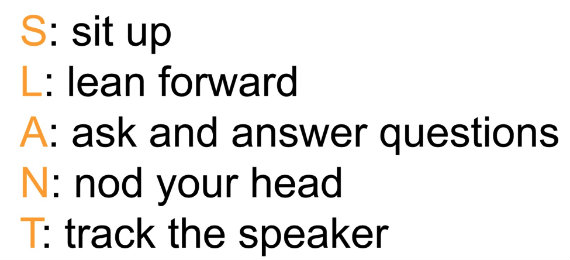
Before students start, I go over these briefly. Not only does that set the scene for my students, but families have a better idea of what to expect.
2. Just expect weather, “presentation flu,” and other acts of God
As I mentioned, gas leaks, fire drills, nosebleeds – all those parts of school that keep us on our toes – seem to happen when I have a room full of families. I used to really obsess about all of the possible things that could go wrong, but I’ve conceded that this is just the way it goes.
By owning this particular reality, it is easy for me to model for my students what resilience looks like in action. It has become more and more important to me to make sure that my students are learning social and emotional skills within the context of their classroom experiences.
There are some situations that you can prepare for ahead of time. Because I live in Buffalo, NY, it is very likely that lake effect snow will sometimes close school on the day of a presentation. Students need to know what to do in this case. Teachers can have a protocol in place for times when class is missed. Do your students keep moving ahead or do they stop where they are? Should students scheduled to present be prepared to present on the day they were scheduled or does it need to be rescheduled for a later date?

A recent day in my neighborhood
What about if a student is absent? Sometimes “presentation flu” hits, then what? It doesn’t really matter how you chose to handle these situations, but the last thing you want to do is to be indecisive when things aren’t going as planned.
3. Celebrate student growth, not grades
It is crucial that we celebrate where students are in their development. Otherwise, if we adhere to one standard of perfection, only an elite few will ever reach it. Rather, the goal should be to celebrate student growth, not grades.
If I had my way, I wouldn’t even give grades; I’d give just the feedback piece. As I wrote about in my recent blog, allowing students the opportunity to retake things shows that you care about their development as pupils and people.
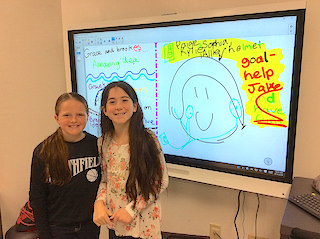 How does that look when talking about presentations or performances? If it doesn’t go well, allow the student the opportunity to do it again. I don’t believe it is wasted time for a room of people to cheer on a student who is overcoming obstacles to improve themselves. If that doesn’t fit, allow the student to present for a different audience – a study hall or some teachers.
How does that look when talking about presentations or performances? If it doesn’t go well, allow the student the opportunity to do it again. I don’t believe it is wasted time for a room of people to cheer on a student who is overcoming obstacles to improve themselves. If that doesn’t fit, allow the student to present for a different audience – a study hall or some teachers.
We need students to know that we not only want them to have specific experiences, but we want them to grow from them as well. The way I see this is that if I were to bomb a lesson, I’d really like to be given the opportunity to make it right.
Would the students still remember the failure? Yes, but hopefully the successful recovery would also stick with them. Most importantly, allowing students the opportunity to do better shows that we care – which can easily get lost if all we are concerned with is assigning grades.
‘
Go ahead. Open your door!
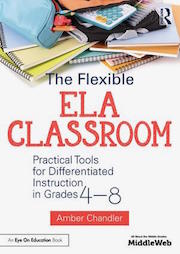 Opening your door for the first time to a public audience can be intimidating. However, it is the ultimate bonding experience among families, students, and teachers when we all come together as partners.
Opening your door for the first time to a public audience can be intimidating. However, it is the ultimate bonding experience among families, students, and teachers when we all come together as partners.
Don’t get me wrong, there might be all kinds of complications, but I’m beginning to think that teaching students to be flexible and adapt to their circumstances might be one of the biggest lessons we can teach them.


































I would hope, too, that parents are invited for special days and evenings for school-wide academic programs, too, so that even more parents can be accomodated since so many work during the day. Then multi-purpose rooms can be used and administrators can help.
Oops, accommodated has 2 m’s.
Mary–Yes, they are invited for events in the evening. I’ve just found that in middle school those evening events are almost all that happen for parent involvement. Next year I’m planning on an evening museum walk for my students to share with parents and family. Celebrating is a must! Thanks for commenting.
Hi Amber,
Just a suggestion-my students use Google slides as well. I create a folder in my drive and share it with them (you will need their email addresses, of course ). Students can upload their presentations to your folder and then when you open it up, they are all there. It avoids the signing in and out and you have access to the presentations later if you want to go back and evaluate them more fully.
Christine–Thanks! I hadn’t thought of that. It does solve that problem, and I can’t wait to share that with my students. Collaborative problem solving at its best! Can’t wait to try it
out. Thanks for sharing!